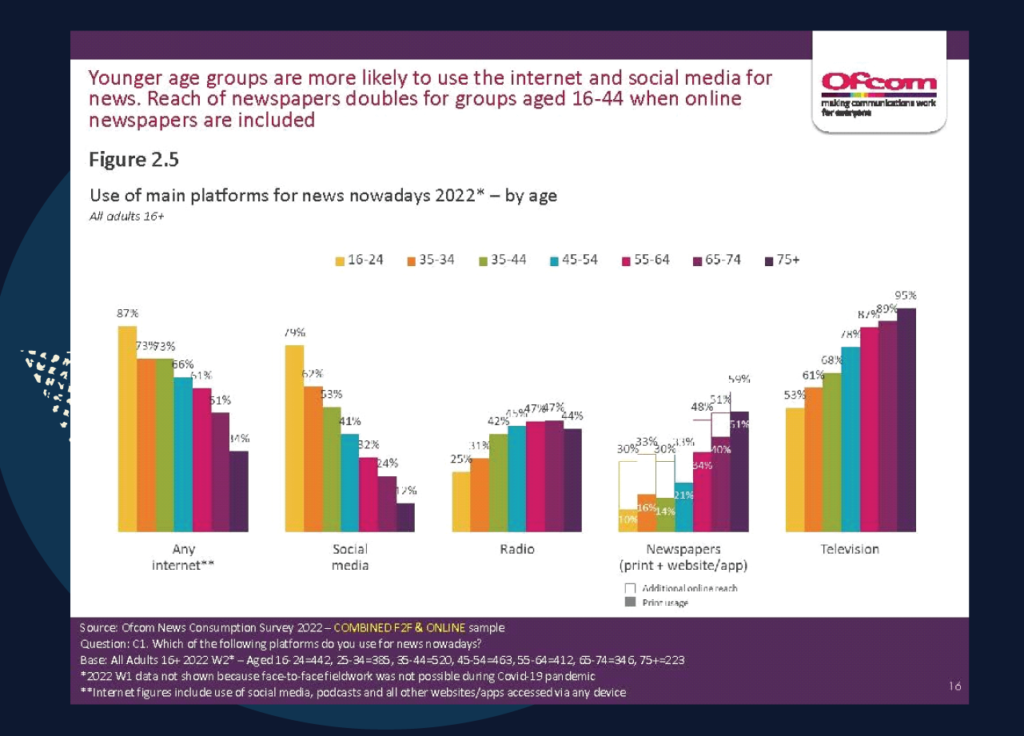If this article was written around 2010, it would probably start with a phrase like “Social media are the future of the media business”. Since then, things have changed a lot and social media are no longer the future, but very much the present of the media business. No matter how skeptical the editors, reporters, and journalists were at the time, Facebook, a social media created primarily for entertainment, became a key bridge in conveying information to users.
Today, things have gone even further, so in addition to Facebook, we also have YouTube, Twitter, Instagram, and lately the increasingly popular TikTok on the field. Just as experience showed back in the first decade of 2000 that the media must not ignore the trend of information consumption created by Facebook at that time, so they must not ignore that trend today either. The entire media business and its employees must orient themselves towards the way of marketing and consuming content in accordance with new trends.
However, no journalist, no media outlet that wants to remain professional and maintain the trust of its audience must abandon the postulates of precise, accurate, objective and balanced journalism. It is the only feature that gives the media a distinct identity on social media. At the same time, it will uphold their social duty to fight against the influx of misinformation and fake news that have flourished since the advent of social media.
Journalists of the new era

After this long introduction, let's talk about today's media production trends that were created together with the development of social media. The first example of change is the media workers themselves. A phrase that could describe today's (young) journalist is "One man show", or journalist, photographer, cameraman, editor, editor of social media - all in one.
In order to be able to send information from the field in a timely manner, the journalist should know how to present what he has learned via text, video, or photo. In order to be able to do that, a journalist of today must know how to take a good photo, good video content and share it all through social media, in order to stay in the race to be exclusive. Fortunately, today's journalists have a mobile phone in their hands - a tool that can help them do it all themselves and fulfill the need for faster publication of media content.
Videos and photos of lower quality will go through

Experience from the Balkans has shown that the generations of journalists who started entering professional journalism around 2015 have much more skills in the multimedia approach when creating media content. The reason for this is that internet portals and social media were (and still are) their natural environment, and mobile phones were part of their development much earlier.
The use of mobile phones and the need to publish information as quickly as possible has created a new trend in the quality of visual content.
If a photo with a low resolution or a video that "is shaking" would not pass the strict judgment of the editorial board before, today the situation is a little different - it is perfectly fine to publish a photo with a lower resolution or a video that is not the most stable, because you recorded it on the way.
What is important is that the visual content is accurate, objective, that there is no "cropping" or editing changed with the intention that your visual informative content acquires a different connotation or becomes much more dramatic or beautiful than what it is in reality. Adhere to the postulates of correct, accurate, unbiased journalism.
Should I publish on the website and on TV first, and then on Instagram or Facebook?
If this question was asked ten years ago, then the answer would probably be: first put the information on your web portal, and then think about social media. Today, that has also changed. Social media are in the first place. The first information should go there, especially if it is about the so-called breaking news.
However, you have to keep in mind that when it comes to social networks, algorithms are the main thing. Algorithms and artificial intelligence are what greatly influence whether your content will reach the audience. What all social media strive for is to keep the audience on their platform as long as possible. It's part of their business model. Keep that in mind and therefore don't be surprised if the article you published as a link to your web-portal does not bring you visitors or reaches a small number of your "fans". This is because that social media does not want its subscribers to go away from it, even though you are the person who produced that content.
There is a solution, and that is: publish as many of your photos, videos and information as possible, directly on social media. In this way, you will get more trust from the algorithm on that social media, and then your regular links to your web portal will get more readers.
Algorithm of young readers

It's not just computer algorithms who decided that most of the information you published today will reach the audience only through social media. What has even even bigger effect are the new trends in information consumption that are been developed among young and somewhat older generations of readers and viewers (from 15-year-olds to 35-year-olds).
Research in Great Britain, published by "Ofcom" (the British communications regulator), showed that new generations of users increasingly receive news on the internet, and most of that content comes via social media.
This can be seen in table 2.5 (source: Ofcom News Consumption Survey 2022 –COMBINED F2F & ONLINE sample:) - - 87% of users aged 16-24 use the internet as a source of information. In addition, 79% of them get that content through social media. It is similar with the generations that are around 34-35 years old today - they are the generations that are actively working and have an influential role in a society.

This research also showed that teenagers are increasingly relying on Instagram, YouTube as well as TikTok. While those around the age of 35 are still the generation to whom Facebook is somewhat closer and more familiar.
Instagram and news media
In this article, we will devote a little more space to Instagram, which in the race with TikTok managed to become more influential than it was when it relied only on photos.
Instagram is a platform whose main identity was photos and the ability to edit them with filters and then publish them. Today, the situation is a little different.
Instagram Reels
In August 2020, Instagram promoted a new option for publishing video content, which they called "Reels".
They are short videos in vertical format (9x16 ratio), which can last up to 90 seconds and can be edited using music, text, transitions, photos, animations.
In the race with TikTok, Instagram recently changed its algorithms and allowed "Reels" to become much more visible than photos. This made it possible for the "reach" of these contents to increase many times over, compared to previous options such as photos and so-called "story".
Media and „Reels“
As I wrote earlier in this article, the media must keep up with the innovations brought by technology. The same goes for the new Instagram trend. This means that if they want to follow new generations and have their content reach a new audience, then they must focus on producing "Reels" videos.
The process is simple:

- While on the field, if you have a mobile phone, make a short video in a vertical position. Instagram allows you to post that content directly on the platform, through their app.
- If you don't have a video, then you can make "Reels" with photos as well. But it is recommended to "crop" them in vertical format 9:16.
- Add a few words, so viewers would know what it's about. If the topic is someone's statement, then, if you have time, add a subtitle for that interlocutor. Instagram users want to read what they listen to.
- „Reel“ "Reel" can also be your big TV story - cut only the most important moments from the coverage and publish them as one Reel of about 30 seconds.
- Take a high-quality recording, if possible.
- Be concise, creative and without excess material - the first two seconds are crucial to keep the user, in order to continue watching your "Reel".
- At the beginning and end of the video, add your logo or "thumbnail" by which the audience would recognize you more quickly.
- Check statistics - find out what time of the day and week your audience is watching you the most. Then post a new "Reel". It is enough to have only two such posts during the day.
- Spend more time on quality than quantity. If you get more views and reactions to one "Reel", then your next posts will be much more visible.
- Add the so-called hashtags, i.e. keywords that are related to what you posted. That way, your post will reach your audience more easily.
Technology is changing - the postulates of correct journalism remain the same

Please note that all of the above is valid for this or the next two years. How it will be after that, we will find out then. Yes, that's how today's sharing of a good part of media content looks like - like a constant race with algorithms and trends via social media.
Technology is changing rapidly, but some postulates in journalism remain the same, regardless of which medium we use to distribute information. It is an obligation, as I wrote earlier in this article, that every media worker remains consistent in transmitting and producing accurate, verified and balanced information. It is an obligation in the constant battle with misinformation and fake news that are becoming more and more powerful with the development of social media. Journalists and professional newsrooms must remain consistent with credible information, regardless of whether that information is distributed through an internet portal, through social media, or through some new media platform that will come our way in the future.































